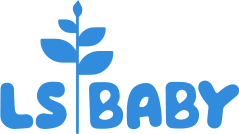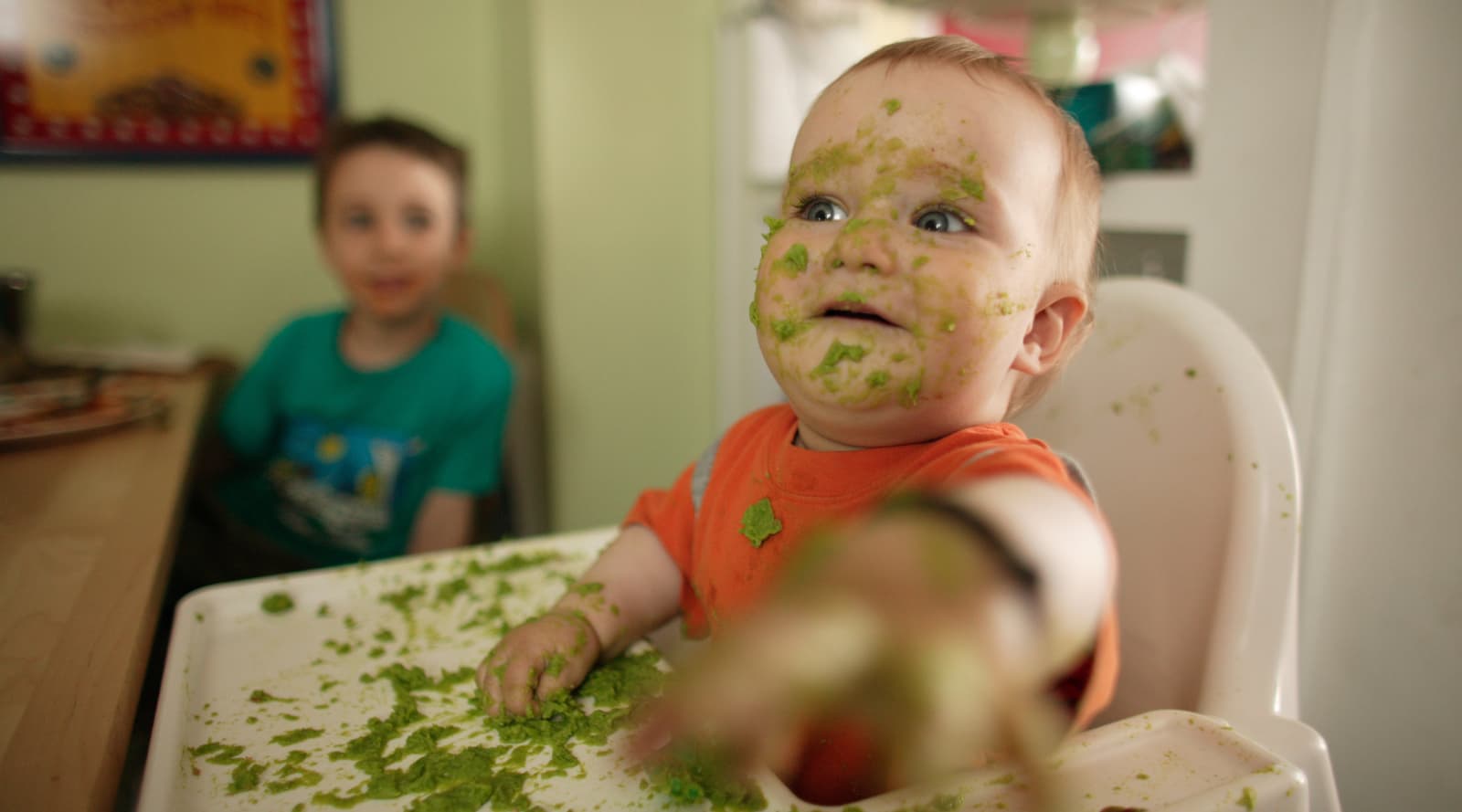Weaning your baby by introducing solid foods is a big milestone in your little one’s life. It’s a sign they are growing up and are ready to try different food experiences. In fact, it’s a great time for the whole family, especially when your baby can sit up in their high-chair around the table and have the same meal as everyone else.
The NHS recommends weaning at around six months, and some mums and dads will start off by spoon-feeding purees and softer foods to their baby. Others leave it up to baby a bit more through baby-led weaning, offering their little ones food like cooked and cooled broccoli, carrots and other soft fruit and veg and foods they can hold and try themselves. A combination of both with some milk to top up will probably suit your hungry little bundle down to the ground at this early stage.
The importance of weaning
Weaning is a really important part of your baby’s development and sets them up for a lifetime of hopefully enjoying lots of different (and healthy!) foods. By learning to chew and swallow weaning can help your baby’s speech come along – you might even get to witness their very first ‘yukky’ or ‘yummy’ words!
Baby-led weaning and spoon-fed weaning
There are a few differences between baby-led weaning and spoon-fed weaning. With traditional weaning, babies are spoon fed with smoother, mashed up food to start with and then move on to more textured solid food gradually through the three stages of weaning. Baby-led weaning is where you give your baby finger foods from the start. It means they can hold and try the food themselves. They’ll get used to lots of lovely different tastes and textures in their own way, just be prepared for the mess!
Spoon feeding means you’ll have a bit more control over how much your baby eats. If mealtime ends in an upturned bowl and an unhappy baby, then don’t be concerned. Early weaning is all about your baby trying new tastes and textures rather than the amount of food they eat. They’ll still be getting most of their energy and nutrients from their milk.
Remember, babies all develop and grow at different rates. If spoon-feeding works now, you can always try baby-led weaning a little later on.
When to start weaning your baby
Six months is normally around the right time, but if you’re not sure what’s suitable for your baby, don’t be afraid to ask your healthcare provider for guidance. All babies are different, but if your little one is starting to show signs of being interested in your and the family’s meals, it might be time to start thinking about it. You should be good to have a go providing your baby:
-
Can bring their hands up to their mouths (so they can pick up and put food in their mouth)
-
Can sit and stay upright in their high-chair and hold their head steady
-
Can swallow manageable bits of food rather than spitting it out
Sucking on their toys, waking up in the night when they usually give you a blissful whole night’s sleep or wanting extra milk might not necessarily mean they’re ready to give weaning a go. It could be teething or a growth spurt (so get those next size up baby grows ready!)
What foods to try when weaning
Weaning can be one of those memorable moments in your baby’s life. The look of absolute horror on their faces when you try them on a bit of sweet potato or the sheer joy of trying their first bit of apple can be a lot of fun! Your family will enjoy seeing your baby grow up, too, so sit Grandad next to the high-chair for that next Sunday roast (so long as he doesn’t mind getting covered in carrot!) Start them off with small bits of solid food first (baby, not Grandad) once a day and go from there.
Your baby only has a tiny tummy, so they won't need three square meals a day. You can start by offering them a few small amounts of food and see how they get on. It's a good idea to begin baby-led weaning when you've got plenty of time and when little one isn't too tired and before their usual milk feed as they might be too full to try.
Let them go at their own pace and keep offering lots of different foods with different textures – it can take eight tries before they decide they like something. Allow plenty of time and let your baby go at their own pace.
Don't forget your baby will still get most of their energy and nutrients from their milk, and it should be their main drink for the first 12 months. You can offer them small sips of water from six months (cups without valves are better for their teeth) but not whole cow’s, goat or sheep milk until their first birthday.
Here are a few weaning food options to start them on (remember to make sure cooked food has cooled right down before serving):
-
Blended, mashed, or soft-cooked sticks of parsnip, broccoli, potato, yam, sweet potato, carrot, apple or pear are all good choices for your baby’s new menu.
-
Baby rice made up with your baby’s usual milk
-
Eggs (eggs without a red lion stamp should not be eaten raw or lightly cooked). Eggs can be mashed boiled, scrambled or hard boiled and sliced as finger foods.
-
Foods with gluten, wheat, barley and rye (keep an eye on any potential allergic reactions and start off with small amounts).
-
Nuts and peanuts (crushed or ground up; again, feed in small amounts to check for allergies and avoid giving children under five whole nuts).
-
Seeds (crushed)
-
Soya
-
Boneless fish - avoid fish with high mercury content, though such as shark, swordfish or marlin.
Introduce the foods that could cause an allergic reaction, such as eggs, fish, seeds, nuts and soya, one at a time and in very small amounts so that you can spot a potential allergic reaction. Read our article on allergies to know what to do and what to look out for.









